The story of the Teddy Bear
Did you actually know where the teddy bear got its name?
Read the StoryBefore one of our Steiff animals, which often accompanies a child throughout its life, starts its journey into the world, it is lovingly crafted in many small steps. Just as every person is unique, each of our animals is a valuable, unique specimen thanks to this special manufacturing process. This is what makes them so special.
Only materials of the highest quality are used in our Steiff toy factory. Starting with the sewing thread, through the filling material, buttons, eyes and accessories to the respective outer material of our Steiff animals.


The first step is the idea. Our designers create a sketch and at the same time consider the size and shape of the Teddy bear.
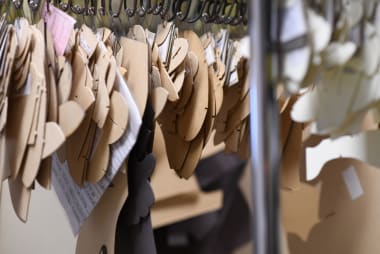
Based on the sketch, our designers create the individual cutting patterns, for the body shape of the Teddy bear. Detailed information is noted on the cutting pattern, which will later serve as a guide when sewing.
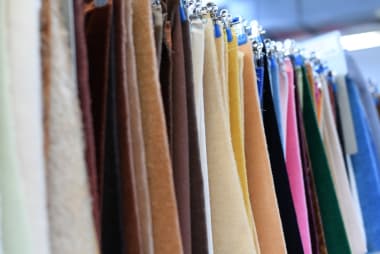
With the selection of the materials, our designers contemplate the character of the Teddy bear and also whether this will be a cuddly toy or a collector's item.
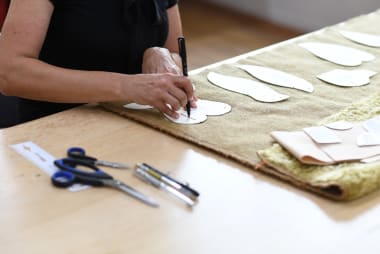
The individual cardboard templates are placed on the respective plush, fabric or knitted fabric and the outer contour is transferred to the textile. Extreme caution is required here, each cut piece must be aligned according to warp/weft and/or pile direction and also use it economically. Then the parts are cut out precisely according to the contour.

Accuracy is required here when the individual pattern pieces are sewn together inside out. When finished, all the assembled parts, legs, arms, body and head are turned the right way through a specially designed tool, and he is now ready for the next step.

The Teddy bear is filled step by step by our seamstress. She pays special attention to the amount and position of the filling material, because this has a decisive influence on the shape of the Teddy bear. Only the body is not yet filled.
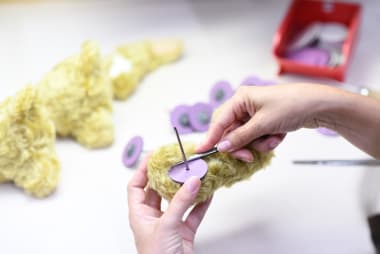
With the insertion of cardboard discs, the mobility of the Teddy bear is created. The discs are glued into the individual limbs and connected to the body with a matching counterpart by means of a nail and fixed in the desired position. Now the body is also filled.
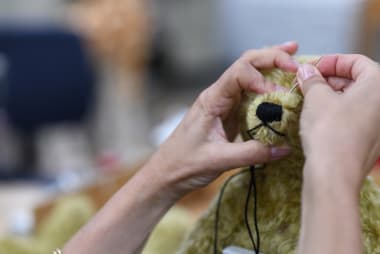
Our seamstress lovingly embroiders the nose of the Teddy bear by hand, determining the size of the nose by the number of stitches. Thick or thin threads are used depending on the desired character. The length of the nose bridge and the curve of the mouth stitch determine the smile of our Teddy bear.

The eyes are sewn into the head with a thread and fixed at the back of the head via several knots. The size and position of the eyes significantly influence the expression of the face. If you want the bear to look childlike, we will give it bigger eyes.

In this step, the hair of the Teddy bear is cut with scissors to the desired length and shape and combed into the right position.
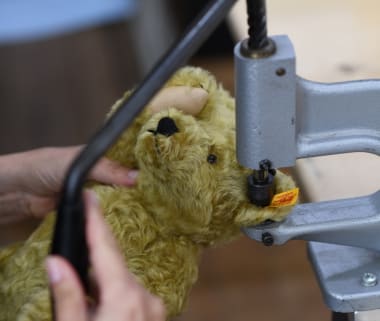
After an intensive quality control inspection, our Steiff Teddy bear receives our trademark, Button in ear, together with his ear tag and his chest tag, all by hand. This makes him unmistakably authentic.
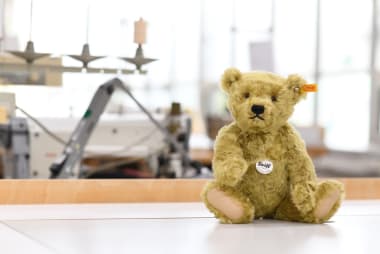
Ready to go, the original Steiff Teddy bear then sets off on his journey into the world.
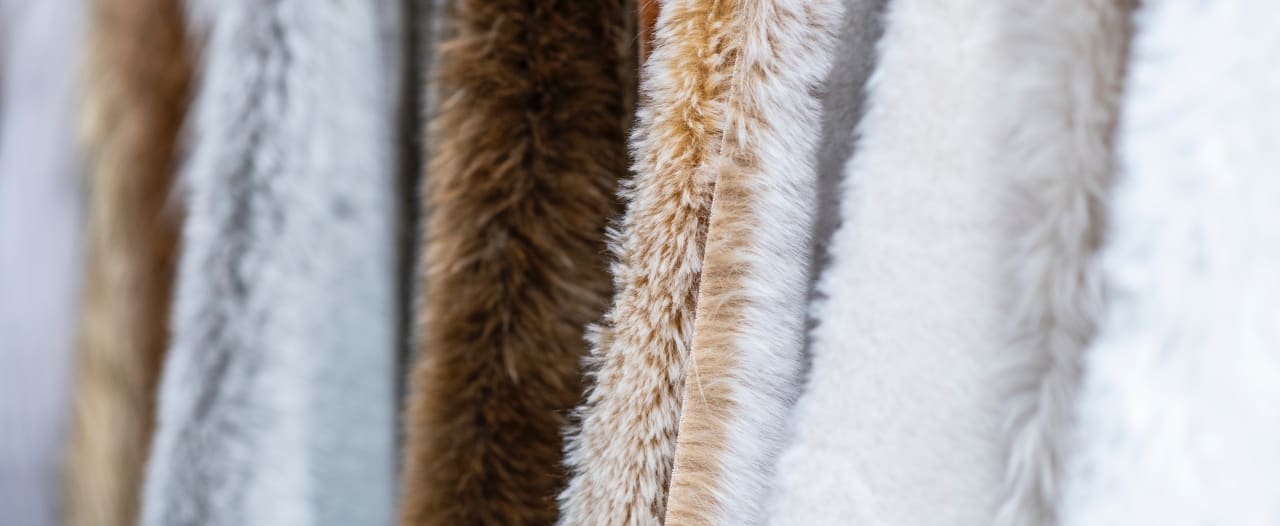
We only use high-quality materials from controlled production.
In 2009, we joined forces with our supplier Schulte, who supplied Richard Steiff with the fabric for the world's first Teddy bear in 1902. This makes us the world's only manufacturer of soft toys with our own weaving mill.
The entire manufacturing process is thus in our hands: from the initial idea to the finished Steiff animal.
Together with Steiff Schulte in Duisburg, we work on the materials of the future and develop our own fabrics from a wide variety of alternative raw materials.



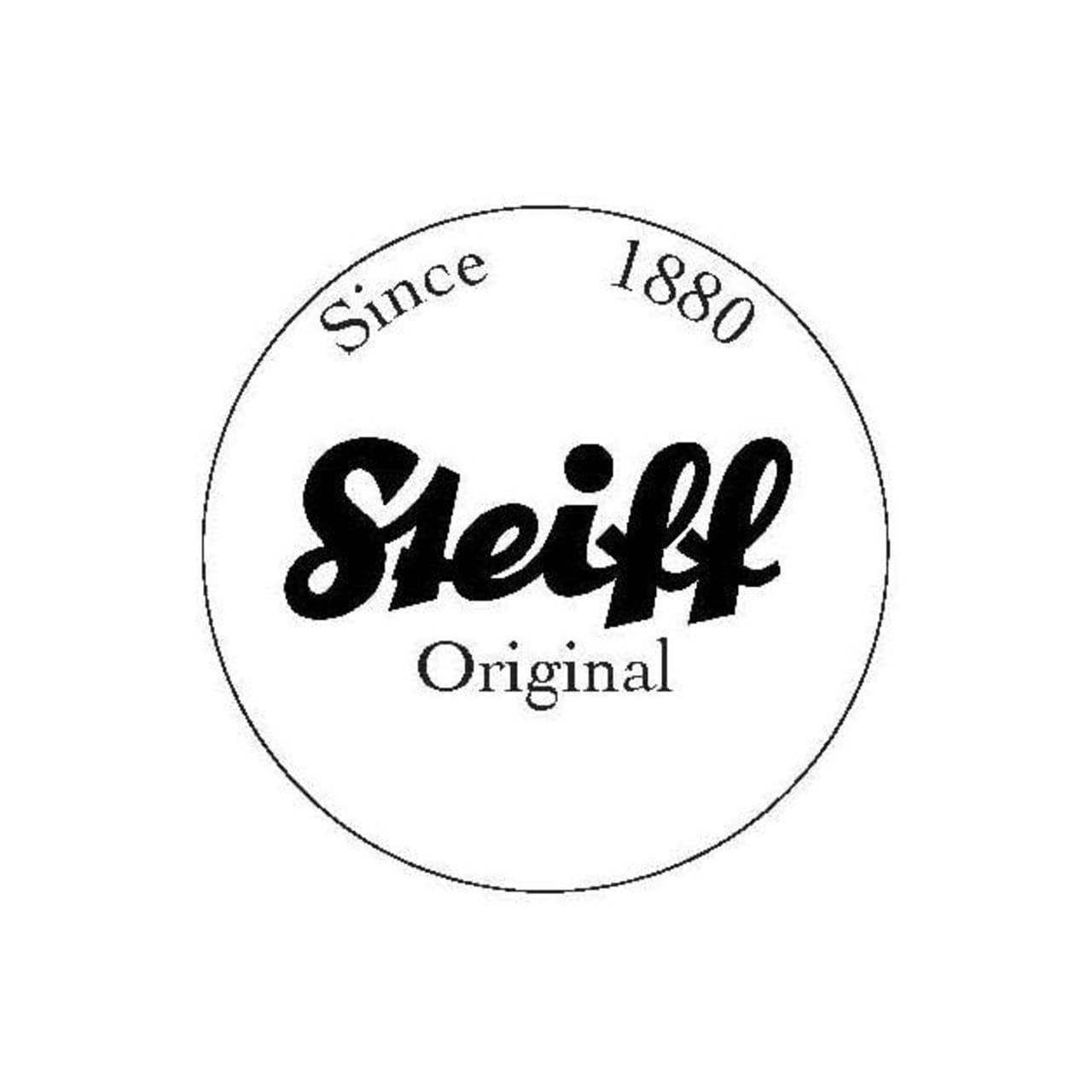

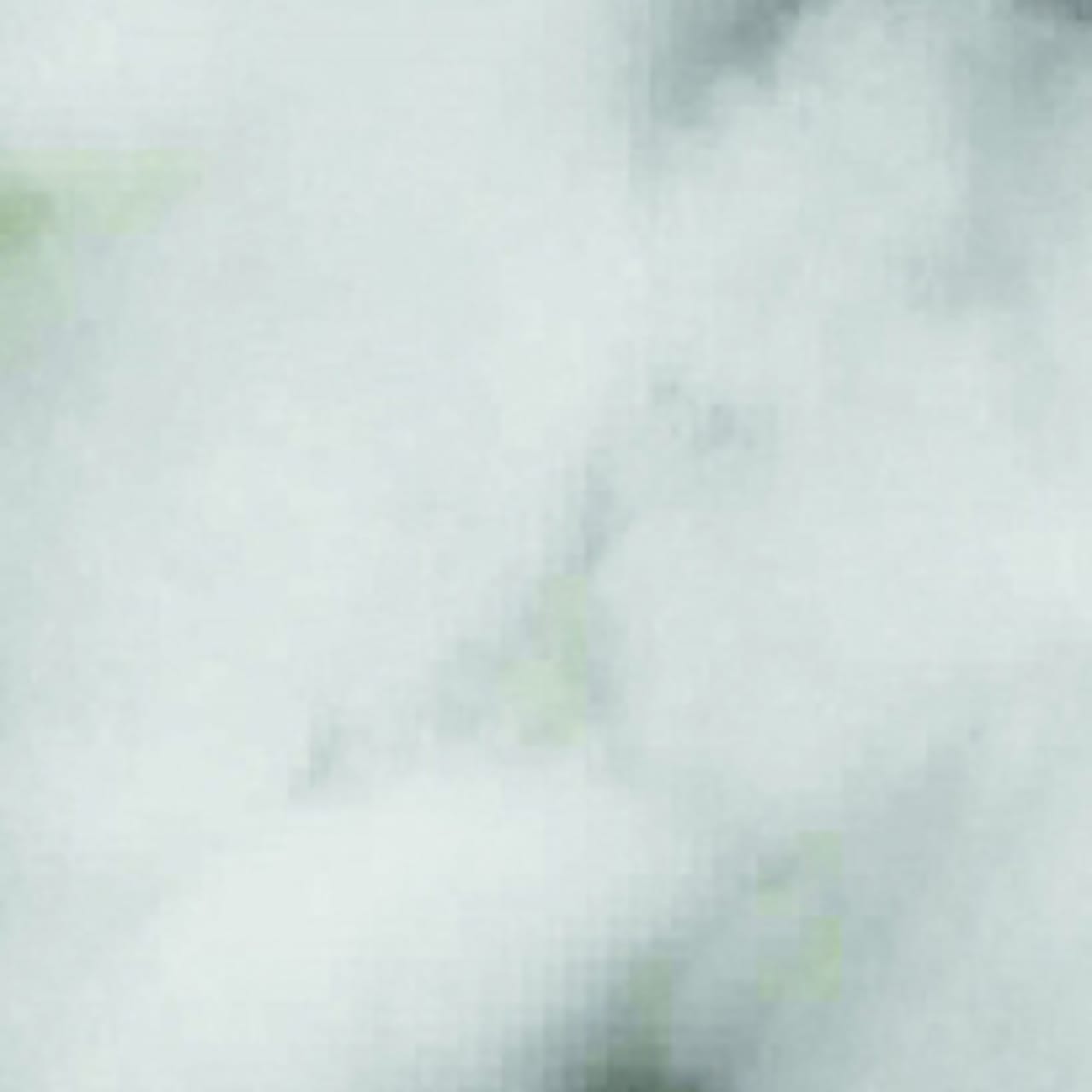






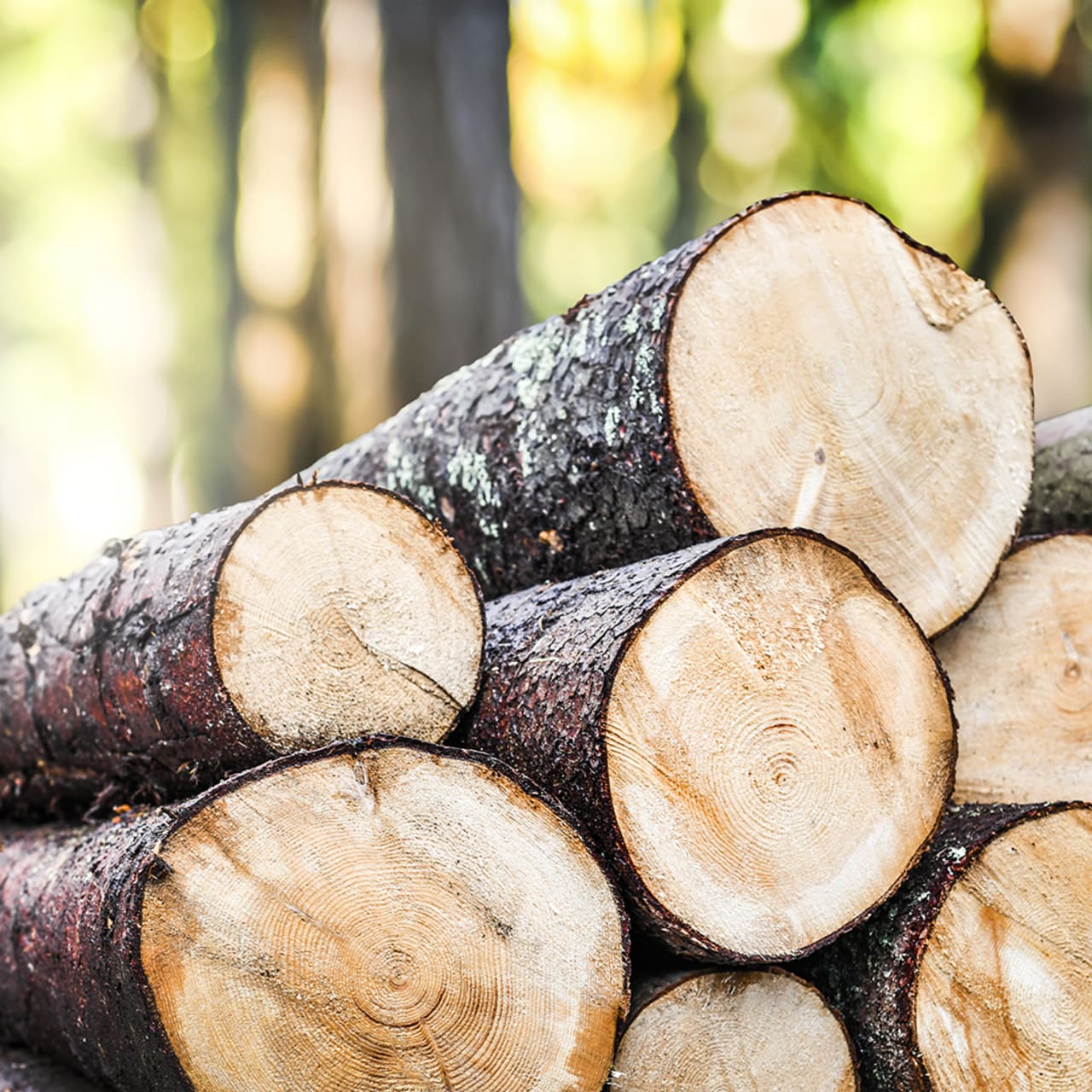


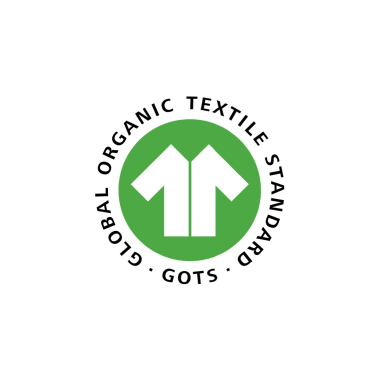
Feeling, touching, smelling, tasting - that's how the little ones and toddlers explore their big world.
Our Steiff GOTS baby series is made of pure fluffy cotton from controlled organic cultivation and certified according to GOTS (Global Organic Textile Standard) and fulfils the guidelines of the IVN (International Association of Natural Textiles).
Thus, we achieve a product quality that is second to none and stands for all-round intact nature: organic cultivation without pesticides, no use of optical brighteners, dyeing without allergenic components, as well as fair working conditions for all involved.